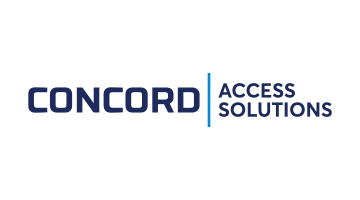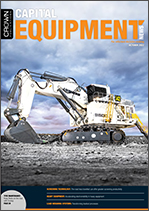 Accelerating electromobility in heavy equipment
Accelerating electromobility in heavy equipment
Feature: Although large capital investments are required for mines and quarries to fully decarbonise, certain measures such as adopting renewables and electrification of equipment are gaining traction. While electromobility has initially focused on compact type machinery such as mini loaders and excavators, recent developments in battery technology promise to accelerate the electrification of heavy equipment.
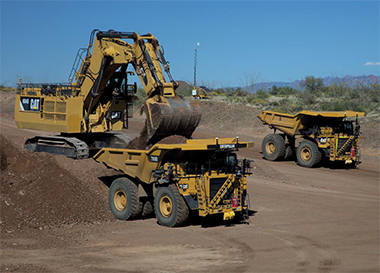 Recent announcements by several industry players highlight the urgent need to electrify off-highway machinery to help the industry reduce greenhouse gas emissions (GHG) and drive the sustainability agenda. The mining sector alone is responsible for 4 - 7% of GHG emissions globally, yet industry figures show that only 0,5% of mining equipment is fully electric.
Recent announcements by several industry players highlight the urgent need to electrify off-highway machinery to help the industry reduce greenhouse gas emissions (GHG) and drive the sustainability agenda. The mining sector alone is responsible for 4 - 7% of GHG emissions globally, yet industry figures show that only 0,5% of mining equipment is fully electric.
A McKinsey & Company research report, Harnessing momentum for electrification in heavy machinery and equipment, notes that battery-electric adoption could offer sizable potential in heavy machinery. There is a strong business case for some applications already and addressing barriers could unlock more opportunity.
The research shows that battery electric technologies can already be economically viable in several heavy machinery and equipment types and applications relative to conventional powertrains. Under certain assumptions and scenarios, total cost of ownership (TCO) for battery electric equipment could already be lower than it is for internal combustion engines in three of the four equipment and application types that McKinsey & Company investigated, with up to approximately 20 to 30% lower TCO compared with traditional ICE equipment.
Transforming loadout processes
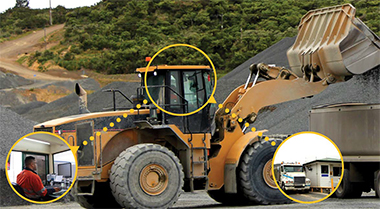 As part of the industry’s response to the innovation imperative, mines and quarries are turning to digital systems to optimise every part of their operations. To get the best out of their loadout processes, mining and quarrying companies are increasingly seeing value in payload management systems.
As part of the industry’s response to the innovation imperative, mines and quarries are turning to digital systems to optimise every part of their operations. To get the best out of their loadout processes, mining and quarrying companies are increasingly seeing value in payload management systems.
In a world where data has become the ‘new currency’, says Loadtech sales director Glen Webster, payload management technology is a must-have on site. The systems help operators accurately and effectively load haul trucks to capacity, within production, path to zero harm and part of the industry’s response to the innovation imperative, mines and quarries are turning to digital systems to optimise every part of their operations.
To get the best out of their loadout processes, mining and quarrying companies are increasingly seeing value in payload management systems. In a world where data has become the ‘new currency’, says Loadtech sales director Glen Webster, payload management technology is a must-have on site. The systems help operators accurately and effectively load haul trucks to capacity, within production, path to zero harm and loading unit parameters.
To meet the growing appetite for payload management technology, Loadtech, the authorised Loadrite distributor in sub-Saharan Africa, is introducing the Loadrite 360 – a loadout automation and reporting system for mine and quarry loadout activities. The technology comprises a wheel loader onboard scale, an automated communications connection and a performance reporting tool. Jobs are entered in the office and selected in the loader, reducing data entry, eliminating mistakes and improving customer satisfaction.
Screen ownership can grow organically
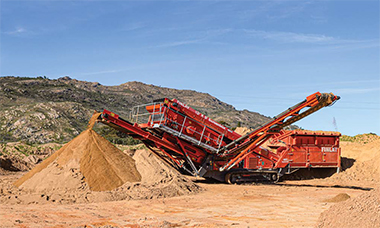 Knowing mining sand and gravels will lead to the need for a screen, and hiring one at the start of their business, soon led the owners of Virtigo Sand & Stone to purchase a pre-owned Finlay 683 Screen before purchasing a brand-new piece of equipment from Bell Equipment. Hiring, buying pre-owned and later purchasing new equipment shows how different businesses can be accommodated to ensure quality building materials.
Knowing mining sand and gravels will lead to the need for a screen, and hiring one at the start of their business, soon led the owners of Virtigo Sand & Stone to purchase a pre-owned Finlay 683 Screen before purchasing a brand-new piece of equipment from Bell Equipment. Hiring, buying pre-owned and later purchasing new equipment shows how different businesses can be accommodated to ensure quality building materials.
According to Duncan Zwane, Sales Product Manager (Finlay & Kobelco products) at Bell Equipment the Finlay 683 inclined screen has been distributed in South Africa since 2013.
“The Finlay 683 combines scalping, screening, and stockpiling into one self-contained unit. Its rugged design enables the Finlay 683 with its top deck and bottom deck screen to handle material such as sand and gravel, limestone, crushed stone, coal, topsoil and demolition waste,” says Zwane.
He adds that the model features a tipping reject grid, hydraulic screen tensioning of the bottom deck mesh and three on-board hydraulic folding conveyors which make transporting and storage easier.
“The two deck screens allow the screen to separate the products into three different sized products. Compared to the other screens, the Finlay 683 inclined screens costs less to purchase, run and maintain. They are less likely to plug due to the gravity helping them to move the material,” says Zwane.
There’s also the awareness that the market is becoming more sophisticated, and that end-users understand the importance of looking beyond the sticker price of their screens.
Keep fleets on the road
 Navigating potholes, roadworks, dirt roads and more, are also part and parcel of life for commercial vehicles. Eighty per cent of South Africa’s road network is now older than the 20-year design life and 30% of our roads are considered to be in poor to very poor condition, presenting serious challenges for trucks and buses.
Navigating potholes, roadworks, dirt roads and more, are also part and parcel of life for commercial vehicles. Eighty per cent of South Africa’s road network is now older than the 20-year design life and 30% of our roads are considered to be in poor to very poor condition, presenting serious challenges for trucks and buses.
To meet the needs of heavy-duty vehicles, while giving fleet owners and operators added peace of
mind, Sumitomo Rubber South Africa (Pty) Ltd (SRSA), manufacturer of the Dunlop, Sumitomo and Falken Tyre brands, has several tyre ranges on offer. The new generation Dunlop Truck and Bus Radial (TBR) range has been researched, designed and precision engineered in Japan, and exhaustively tested to extremes in all road conditions. Tyres are manufactured to provide optimal performance for a specific wheel position, with Steer, Drive and all-wheel position tyres offering varying tread patterns, rubber compounds and construction to meet a range of heavy-duty and industrial applications – from long-haul highway to regional-haul, on-road, off-road and more.
Long term growth trajectory remains positive for forklift market
 In this insight we see how the forklift market is responding to these problems. Forklift shipment growth had plateaued to some extent as fears of a recession in 2019 led companies to tighten their purse strings. The growth curve of sales and orders has reached a meeting point in 2019. Had there been no COVID-19 pandemic, the global forklift market would have entered an upward cycle from 2019 Q4, the order-intake volume in 2019 Q4 had started rising. Then, in 2020 Q1, COVID-19 hit, and orders declined rapidly, after which China experienced a strong rebound in the second quarter. Although order intake rose at that point, shipment growth stalled due to delays in project completions and supply chain constraints. Since the pandemic, this gap between shipments and orders has widened as companies struggle to catch up with the backlog.
In this insight we see how the forklift market is responding to these problems. Forklift shipment growth had plateaued to some extent as fears of a recession in 2019 led companies to tighten their purse strings. The growth curve of sales and orders has reached a meeting point in 2019. Had there been no COVID-19 pandemic, the global forklift market would have entered an upward cycle from 2019 Q4, the order-intake volume in 2019 Q4 had started rising. Then, in 2020 Q1, COVID-19 hit, and orders declined rapidly, after which China experienced a strong rebound in the second quarter. Although order intake rose at that point, shipment growth stalled due to delays in project completions and supply chain constraints. Since the pandemic, this gap between shipments and orders has widened as companies struggle to catch up with the backlog.
Looking out to 2030, the outlook for the forklift sector remains stable. Whilst the market gets back on its feet, 2022 and 2023 will be a slow couple of years where growth projections will decline slightly. But demand from the logistics sector and promotion of autonomous driving technology will boost the demand for forklifts and also help to alleviate labor shortages.
Although the Chinese market, which makes up a considerable portion of the forklifts sector, has had a grim 2022, the outlook remains positive, and the forecast has not changed dramatically. The global forklift market will maintain a 5.9% CAGR out to 2027, and the e-commerce and logistics sectors will continue to be the most important drivers for the forklift market, playing a critical role in boosting shipment growth.
60 FUSO Canter FE7-136 limited edition models for DTSA diamond anniversary
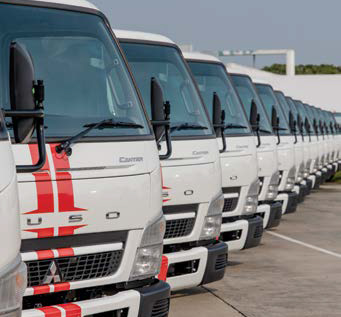 2022 has been a monumental year for the Daimler Truck Southern Africa (DTSA) assembly plant in East London as it celebrates 60 years of manufacturing excellence in South Africa – a milestone that will stay forever etched in the company’s history.
2022 has been a monumental year for the Daimler Truck Southern Africa (DTSA) assembly plant in East London as it celebrates 60 years of manufacturing excellence in South Africa – a milestone that will stay forever etched in the company’s history.
In its continuance to mark the occasion the company pulled out all the stops as it unveiled 60 FUSO Canter FE7-136 special edition models for the local market.
Commenting on the diamond anniversary year Michael Dietz, President and CEO Daimler Truck Southern Africa said, “I am proud to say that this year has been nothing short of amazing for us as DTSA. We kick-started our diamond anniversary celebrations on a high note and now what better way to culminate it than to introduce the FUSO Canter FE7-136 60th edition range, a product we proudly deem kingpin within our FUSO brand. The future of our acclaimed plant lies in our continuous endeavour to produce ground-breaking trucks and buses, our highly skilled people, and being motivated by a single vision – to fulfil the evolving business needs of our customers”.
The FUSO Canter FE7-136 is one of the most popular and top performers in the FUSO stable, and it is for this reason that it is the first-line flagship model to celebrate the milestone. The 60th edition range has been adorned with eye-catching accessories that are reminiscent of the style and essence that is ‘Simply Better Trucks’.
On the exterior, the new exclusive trucks feature sporty red stripes that represent the FUSO brand’s striking colours, further reinforcing the dominance and strength the product stands for. Furthermore, the spacious and functional interior has also been kitted up; the seatbelt pads are branded with a red FUSO logo, giving them a clean and sleek finish. In addition, the open plan floor for easy cabin movement has been enhanced with floor-branded mats on both ends.





